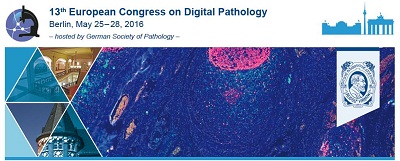Computer Assisted Medical Imaging: From Research to Clinical Application
Abstract
Evolution or revolution? Medical imaging is in a transition from a qualitative to a fully digital, quantitative discipline with fast growing numbers of images and increasing need for multimodal, multidisciplinary assessment. Computer assistance is a key ingredient to efficiency, safety, and quality of care in this domain. With the availability of prior scans in digital format, and with the diversification of the clinical application domains, both data complexity and requests for specialized and integrated tools are rapidly increasing. We will compare radiological imaging with the situation we currently face in digital pathology and discuss major implications and challenges for the future development of computer assisted medical imaging as key technology for modern healthcare. We cover both methodological research and clinical adaptation, ranging from modular and prototypical software integration to prospective clinical evaluation and medical device product integration. For any clinical use of new solutions, quality assurance is performed according to the guidelines defined by the FDA and other regulatory bodies, which represents a particular challenge for novel data driven and self-learning software systems. In addition, decentralized infrastructures including cloud computing will support efficient collaborative research. Medical image computing, quantitative analysis, auto- mated detection of clinically relevant findings, and computerized classification of disease patterns is expected to have major impact on solutions and workflows used in future clinical routine and in large clinical trials. For digital pathology, the automated and robust combination of information across multiple slides will be a key success factor. A major challenge rests on the barriers and costs of validation of a variety of new solutions and their integration into the routine clinical workflow.Downloads

This work is licensed under a Creative Commons Attribution-ShareAlike 4.0 International License.
Authors who publish with this journal agree to the following terms:
1. Authors retain copyright and grant the journal right of first publication with the work simultaneously licensed under a Creative Commons Attribution License that allows others to share the work with an acknowledgement of the work's authorship and initial publication in this journal.
2. Authors are able to enter into separate, additional contractual arrangements for the non-exclusive distribution of the journal's published version of the work (e.g., post it to an institutional repository or publish it in a book), with an acknowledgement of its initial publication in this journal.
3. Authors are permitted and encouraged to post their work online (e.g., in institutional repositories or on their website) prior to and during the submission process, as it can lead to productive exchanges, as well as earlier and greater citation of published work (See The Effect of Open Access).
4. In case of virtual slide publication the authors agree to copy the article in a structural modified version to the journal's VS archive.








